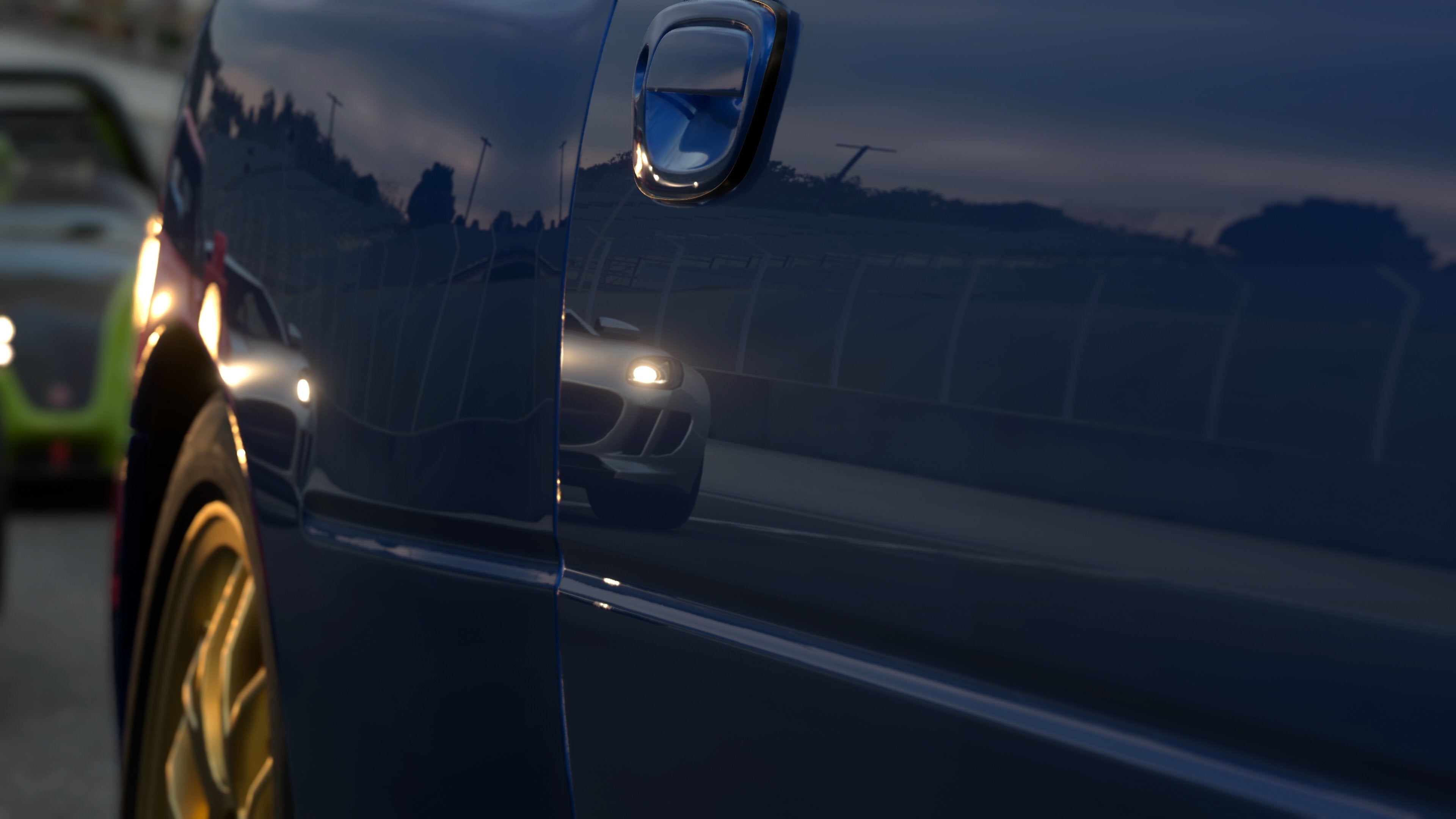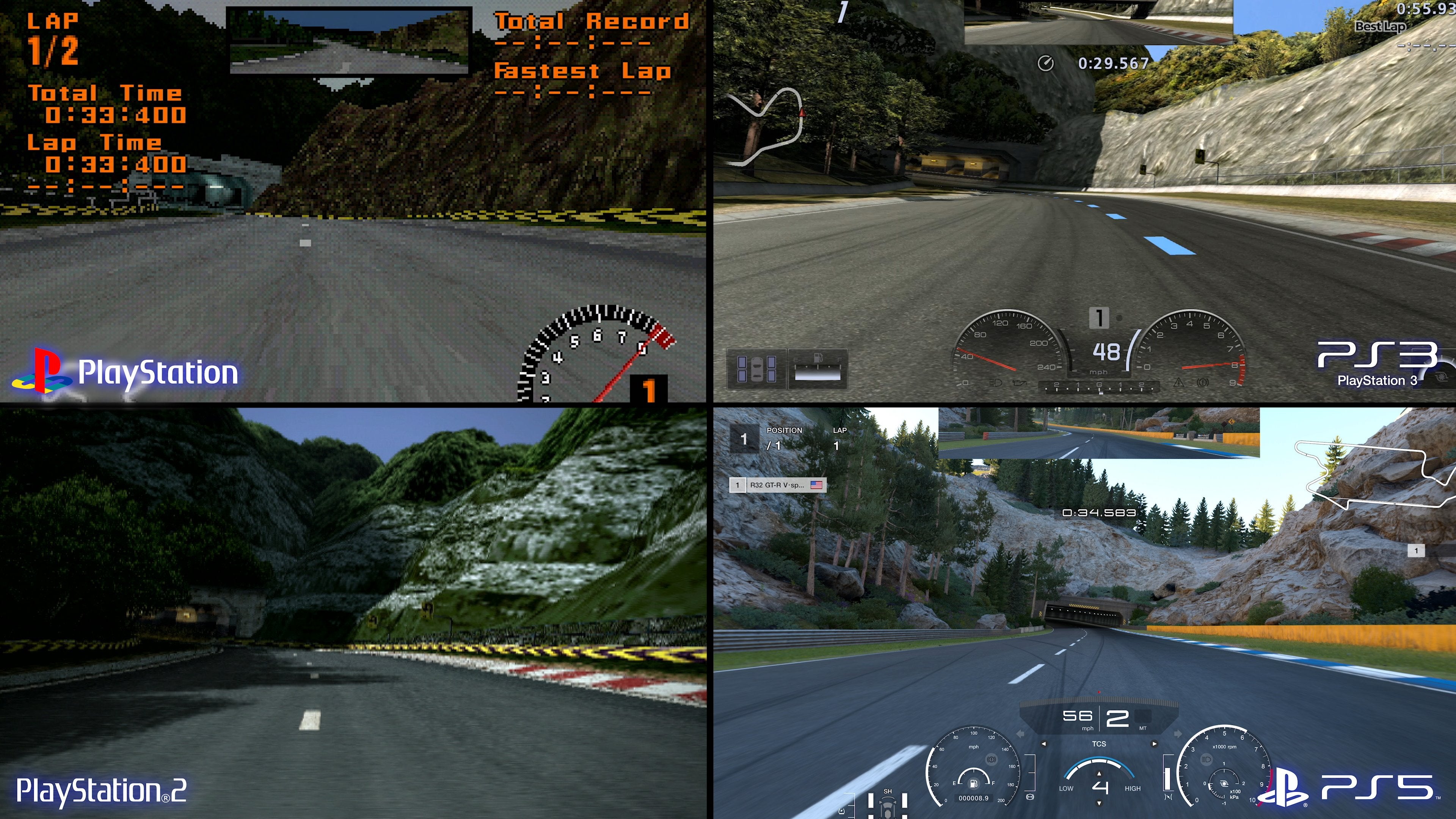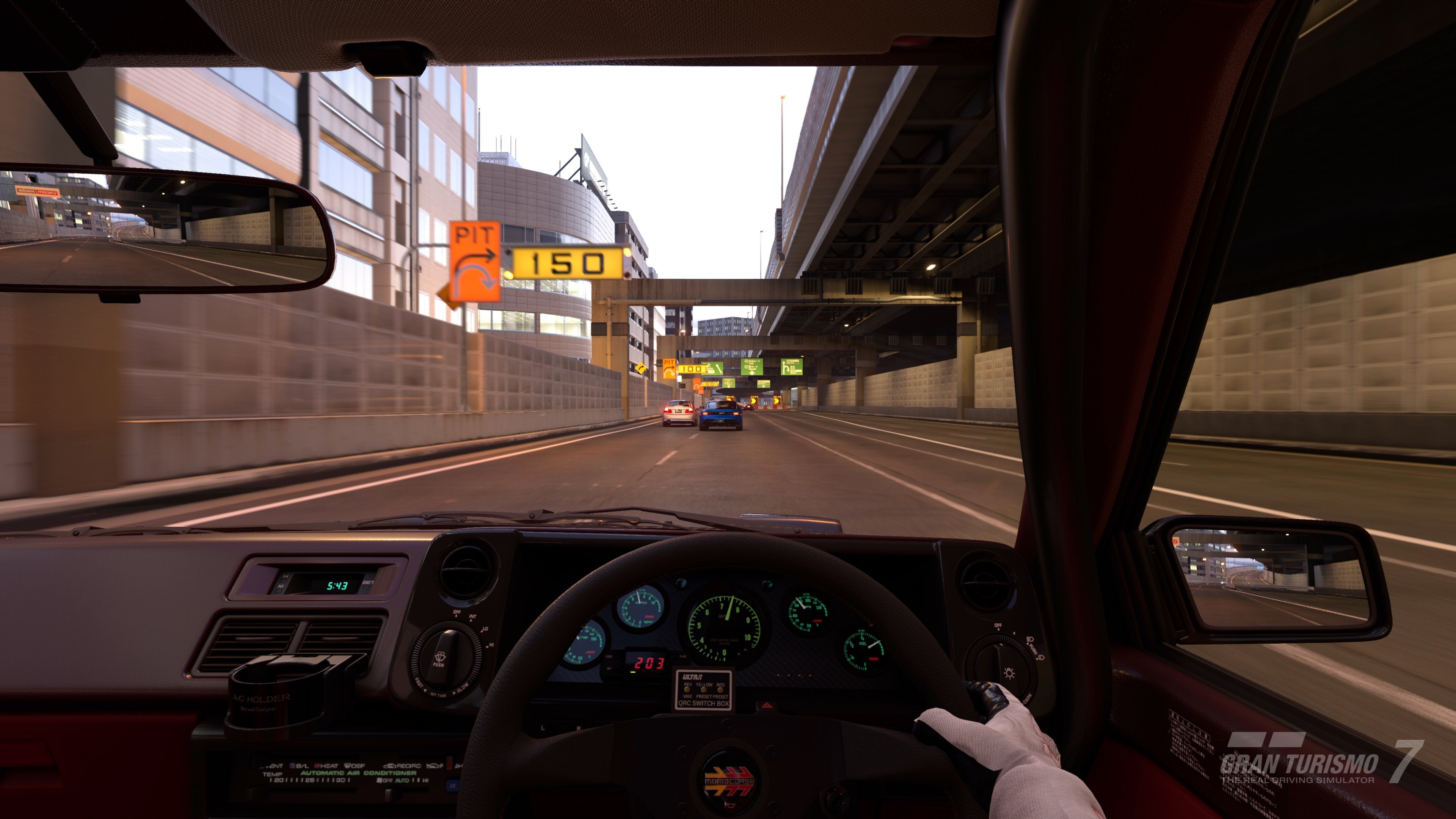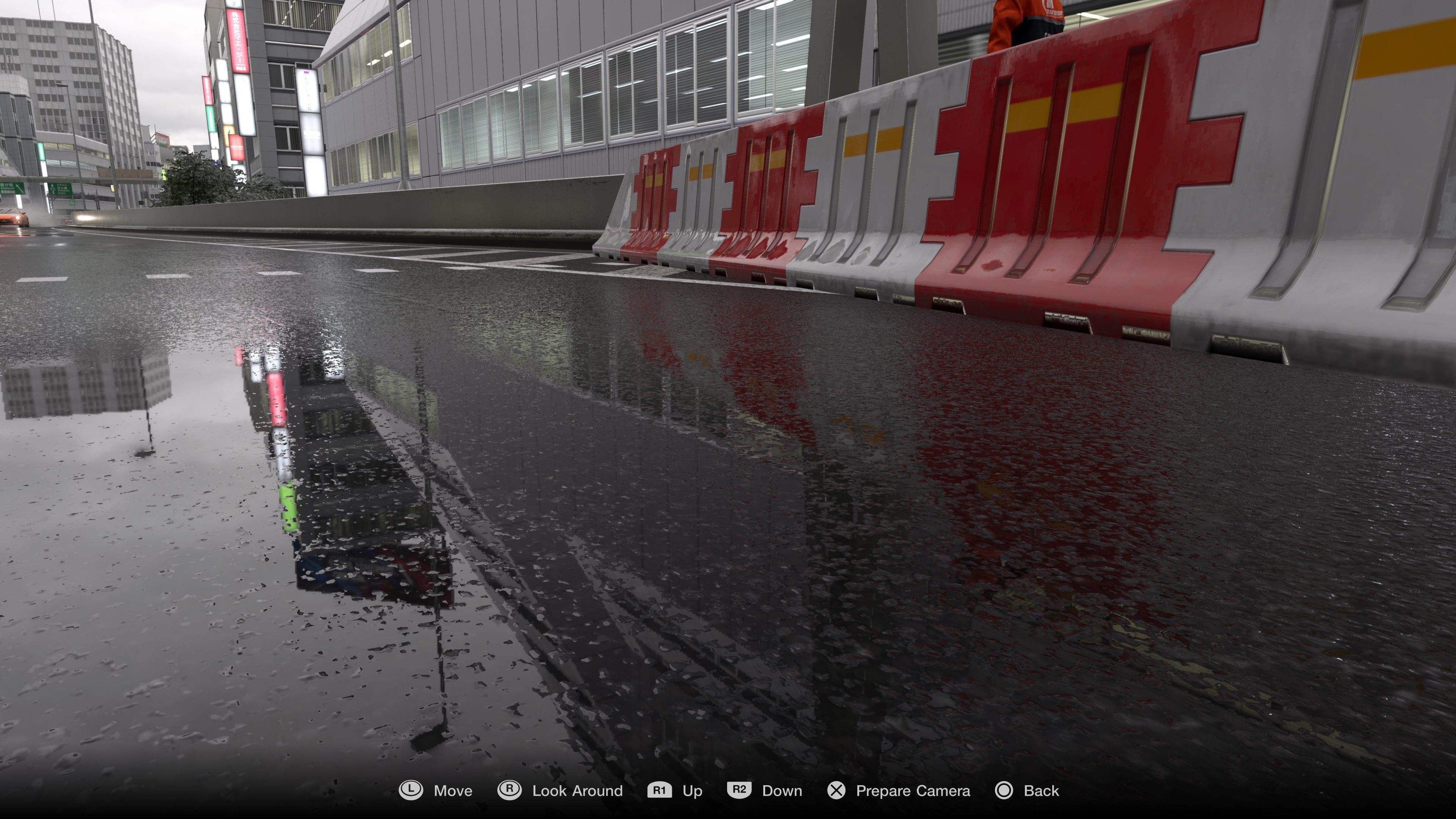Arguably, Gran Turismo as a complete package reached its peak in the PlayStation 2 generation - with the shift to HD on PS3, there’s the sense that Polyphony Digital struggled to transition the series to this new era and while the games that followed were well-made, a certain purity and joy had been lost. On a technological basis, there’s the argument that the studio pushed too hard, hitting hard limits in the PS3 hardware. Nigh-on flawless performance on PS2 fell short on PS3, while the menu systems were complex, friction-filled and cumbersome. Polyphony regrouped and pushed hard for PlayStation 4, rebuilding its technology, focusing on refining the actual driving, the multiplayer and the visuals - but this came with a cost - the traditional Gran Turismo experience was pared back. With Gran Turismo 7, however, you get the sense that everything has finally coalesced into what feels like a perfect mix of Sport’s exceptional driving model combined with the content and progression the series was once known for. GT7 seems to have been built directly on GT Sport then - which perhaps explains why it is a cross generation release, but that doesn’t mean it’s not a beautiful game. So, what does that mean for players then? Well, in building GT7 for PlayStation 5, I see several key areas where Polyphony took advantage of the new hardware to improve the experience. That starts with image quality, the addition of ray traced reflections and the elimination of loading times. There’s more of course, but this is a good place to start. Gran Turismo Sport’s checkerboarded 1800p (or alternatively, 1080p if you set up the front end accordingly) is upgraded to full, native 4K. Beyond the pixel count, however, other aspects of the image are improved - texture filtering, shadow quality, reflection quality and more have all been enhanced. It’s not perfect but it goes a long way to reducing some of the visual artefacts you could spot in GT Sport. One of my favourite additions, however, is the inclusion of per-pixel motion blur during actual gameplay. I believe GT Sport allowed this in the lower resolution mode on the PS4 Pro but it’s nice to finally see the effect used at full resolution, greatly improving the sense of speed and the feeling of motion. So, this is the first improvement then - image quality is a significant step up from GT Sport. My only complaint is that there aren’t any lower resolution options that may have allowed for hardware-accelerated ray tracing to be used in-game. Hardware-accelerated RT is a key feature, but you’re offered the choice between using ray tracing or enjoying a higher frame-rate. Effectively, when using ray traced reflections, this feature is engaged in basically every scene featuring cars except actual gameplay. Replays, interludes and everything within the menu system uses this feature but the frame-rate is capped at 30fps, while turning off RT removes the performance limit. I played with RT enabled and the reason why it’s desirable comes down to the nature of cars and the materials they’ve made from. One of the key strengths in Gran Turismo lies in its treatment of car paint - there is a real attention to detail paid to the way light interacts across a wide range of surfaces. This was already exceptionally well-handled in GT Sport and GT7 is simply a continuation of this work, using more advanced hardware. Most cars, when painted, use a clear coat to seal the paint work and protect the body for increased durability and this clear coat has an impact on the way light is reflected back towards our eye. In GT7, the game simulates the base paint first followed by any additional layering - such as a metallic coating that can be applied - and finally the clear coat itself. It’s this simulation specifically that allows for such realistic surfaces across the game’s vehicles. And with ray traced reflections, the result is now more accurate as the paint reflects not just the environment but also other cars as well as inner reflections. When active, ray tracing is applied to all cars in the field - so there is no sharing of reflection textures here, everything is bespoke, and cars all reflect one another properly. The only limitation? RT reflections aren’t mapped onto reflective surfaces like glass. The approach taken in GT7 is similar to Insomniac’s work in Ratchet and Clank and Marvel’s Spider-Man, where rays are traced into a simplified acceleration structure to speed up the process - that is, the environment visible within the paint is simplified. Most of the budget is spent on the cars, which are presented with a high level of detail within the acceleration structure, leading to very clean, accurate reflections. This especially pays off in replays, which is precisely where you’re most likely to notice reflections in the first place - but the hit to performance makes it unsuitable for gameplay, where Polyphony targets 60fps. I’d like have seen an Insomniac-style performance RT mode, assuming that the resolution alone is the limiting factor (setting up the BVH acceleration structure for RT comes with its own CPU cost). That said, the more traditional cube and sphere-based reflections are improved and still manage to look great. This old style uses a selection of reflection probes placed around cars which capture the environment each frame. It’s less physically accurate, however, and it does not capture elements like other cars or in-surface reflections but, during racing, it is still relatively effective. In most views, the reflections update at a full 60 frames per second but when using the cockpit view, reflections update at half rate. I believe this is down to the additional reflection probes likely used to simulate reflective surfaces within the cockpit itself. You can spot your driver reflected in the cockpit, for example, but this is not an RT effect. Beyond image quality and RT, the third major pillar is loading. The reduction in loading times has been a big deal this generation but honestly, few games benefit as much as something like Gran Turismo. During the PS2 days, loading was perfectly acceptable in these games but once we moved into the HD era, the amount of waiting increased dramatically. Even the basic menu system on PlayStation 3 was sluggish to the point where it discouraged you from navigation. The mechanical hard drive has finally been eliminated from the home console and with that, PS5’s SSD and decompression engines have a huge impact on accessibility and discoverability. During the game, you’ll be moving around the map to many different icons, as well as jumping in and out of events and races at a regular clip. There’s effectively instant loading between each area, greatly enhancing the fluidity of the experience, while jumping into a full race with a full complement of varied vehicles is so quick, no loading screens are required, just a fade out/fade in effect. Beyond the three pillars, I also feel that cars and environments are very important. By and large, the level of detail here is derived from the already excellent work done on GT Sport but there are a wide range of new cars that have been added to GT7, which seem to benefit from the leap to PlayStation 5. Polyphony’s signature strengths in model detail, materials and lighting fit together in a startlingly realistic fashion. I also love the micro-detail: you can zoom in all the way on the headlamps and the detail holds up. As showcased by the RT, the paint simulation is so good as well - the metal flakes and different paint styles all behave very realistically. The material used on rims and even things like valve stems hold up well. The same is true of the interior work where the discreet difference between fabrics, plastic and leather can be observed. It should be noted that these high-detail interiors are used whenever you drive in the cockpit view and are visible in replays - well, at least on the target car. Environments are also upgraded. It looks as though Polyphony has leaned into existing work for its circuits from Gran Turismo Sport, but with the welcome return of tracks like Trial Mountain, High Speed Ring and Deep Forest, we’re getting to see how Polyphony shapes its environments specifically for the PS5 engine. During actual gameplay and replays, the track detail holds up very well and in fact, looking closely, many of these tracks are quite beautiful to behold. I’m still a huge fan of the Tokyo Expressway, for instance, which exhibits very realistic materials and lighting. However, if you look closely, it’s clear that the level of detail is still not quite of a ’next generation’ quality - the GT Sport roots are evident here. This is an interesting point of discussion. When people talk about the visuals in GT7, the environments are generally a point of critique and it’s true: if you zoom in and look closely at certain elements, the detail level falls short. However, from a more typical point of view, I think Polyphony has done a great job capturing the look of the race tracks. Firstly, consider the nature of these courses - even in real-life, race tracks are built for racing and this comes with a very specific design and look. It’s not beautiful in the same way that an open world landscape might be. Looking at Tsukuba, there’s actually a good amount of detail present, showcased by the fly-by shots. The tarmac, grass and various other surfaces all exhibit a relatively natural appearance. Perhaps it’s bumping up against an uncanny valley-like issue where it’s close to photorealism at certain angles, causing its limitations to stand out significantly more. It’s the kind of realism you might see in games like Flight Simulator which rely on real-world data - from flying distance, it can appear very realistic, but up-close, the imperfections become clear. Still, one of the key reasons why it still looks as good as it does is tied to lighting and weather. Firstly, no matter the time of day, Polyphony has done a great job with simulating the properties of surfaces, such as tarmac, and how they interact with surrounding lighting conditions. Unlike GT Sport, the time of day can change in real-time- you’ll have races that begin before sunrise and end in the early morning. Sun shadows adjust in real-time now as well. This helps create a greater sense of variety and realism as time of day is no longer static. This is combined with a new dynamic weather and cloud system - cloud formations vary based on these conditions and change over time while rain is also possible and as it rains, the ground becomes increasingly saturated, which not only creates puddles with reflections but also requires more careful driving. Wet weather racing is especially beautiful due to the way light reflects off tarmac surface when wet. Also, when driving in rain, GT7 throws around a lot of mist particles which appear to be full resolution - a far cry from the PS3 days with its low-res particles and mountains of slowdown. Also, in the cockpit view, rain droplets splash across the windshield whereupon the wipers - complete with motion blur - wipe them away. Again, a huge improvement over older GT titles. I’m also a fan of the droplets applied to the cars - another detail that complements the excellent paint work. Still, as good as the environments look, I still see a lot of room for improvement - what Epic is doing with its Nanite technology, for instance, hints at what could be possible in a game like this in the future - at least in terms of the environmental detail. So as nice as the circuits look, I don’t believe this represents the peak of what’s possible this generation. Moving on to game performance, there are essentially three individual areas to discuss: gameplay frame-rate, replays with ray tracing and replays without ray tracing. During play, the news is predominately positive. In the vast majority of cases, you’ll enjoy completely stable 60 frames per second gameplay. Nearly every race runs consistently, even with a grid of 20 cars on the track. However, there are two specific conditions which can cause drops in performance. Firstly, there’s Trial Mountain. For whatever reason, there are minor dips in performance while driving around the track. It’s not even impacted by the number of cars in the race - it seems to be down to the environment itself. Solving it will require some tweaking of the track. Beyond that, we need to invoke stress test conditions to make the frame-rate buckle: load up a track in the rain at dusk or dawn, fill out the grid with all 20 cars and for the most pain, set your starting position at the very back of the pack. With this, the screen is filled with reflections, particles and cars causing the frame-rate to dip. This, I’ve found, id the absolute worst-case scenario for GT7. It’s something that could easily be cleaned up with VRR or dynamic resolution scaling but as of right now, the system and the game don’t support those features. With RT-based replays, frame-rate is capped at 30fps and this is maintained most of the time - replays run very consistently and look great with RT reflections but, as you might guess, the stress test conditions for gameplay have a similar impact in replays, causing dips beneath 30fps. But this is exceptional: space the cars out a little further into the race and the problem disappears. Non-RT replays target 60fps and again, it’s the same story - mostly solid but combine a tightly packed grid with bad weather and you may see some dips. Sony gave us a decent amount of time to spend with Gran Turismo 7 prior to review and I’ve really enjoyed my time with the game but I do have one major issue: the online nature of the game. Essentially, GT7 requires an internet connection, and I can’t say I’m OK with this as it is effectively DRM, unless the game is patched. Years later, if you wanted to play GT7 and the servers were offline, you’d be stuck with access to the tiniest sliver of the game. I guess at least you can enjoy Music Rally with the soothing sounds of Hooked On Classics but seriously - it’s not good enough. Despite being able to play GT7 with no online interactions, you absolutely have to be connected to play. It’s not an issue for the time being but it could become one down the line which is where my concern lies. Either way, this is the one black mark on an otherwise fantastic game. And beyond the online requirement, Gran Turismo 7 really is a fantastic return to form for the series. Not only that, but it might also be the best Polyphony game to date. The new GT mode is such a joy to explore - the café, for instance, now gives you goals to work towards that push you to explore all aspects of the game and get to know the different cars. There’s a vast range of event types and areas to explore as well as ideas like Scapes, which places your car within photographs, basically - but it also demonstrates what a new game with pre-rendered backgrounds and 3D models might look like today, which is neat. We’ve focused exclusively on PlayStation 5 for this tech review, but Digital Foundry’s work with Gran Turismo 7 is not yet complete: there are the PlayStation 4 and PS4 Pro versions to cover too - and we’ll be taking a look at those next. What’s interesting here is that replays from one version of the game can be shared with any other, and as the replay camera angles include gameplay views, we’re able to easily get matched gameplay and replay shots across all consoles - a great opportunity to see just how Polyphony Digital manages the generational divide. We’ll be reporting back on this soon!





